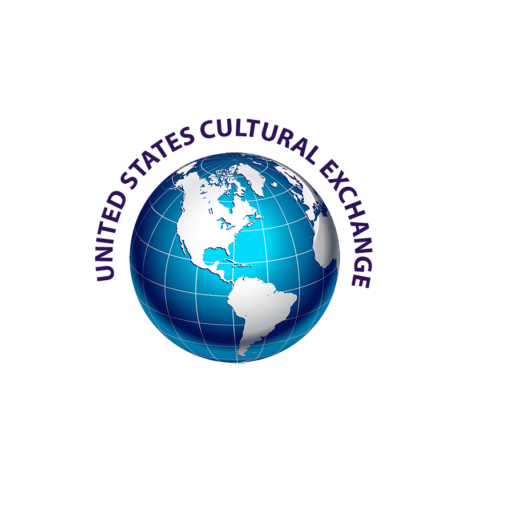Cultural exchange in the United States represents a dynamic interplay of ideas, values, and traditions that transcends geographical boundaries. It serves as a profound manifestation of collective curiosity and mutual respect among diverse groups. This phenomenon is not merely about the superficial sharing of customs; rather, it delves into deeper layers of human experience and societal evolution. The fascination with cultural exchange often stems from the quest for understanding and the desire to enrich one’s worldview.
At its core, cultural exchange fosters dialogue—a vital element in promoting peace and reducing conflict. By engaging with individuals from different backgrounds, we cultivate empathy and dismantle stereotypes that often plague societal perceptions. This connection can occur through various mediums, ranging from educational programs to art exhibitions, culinary experiences, and even interpersonal relationships. Each encounter provides an opportunity for enrichment, compelling participants to reflect on their cultural identities and broaden their horizons.
The United States, as one of the most culturally diverse nations, epitomizes the essence of cultural exchange. Home to an amalgamation of ethnicities, languages, and traditions, American society thrives on the contributions of its immigrant populations. The culinary landscape, for example, is a microcosm of this diversity. From the zesty aromas of Mexican cuisine to the delicate flavors of Vietnamese pho, food becomes a shared language that transcends cultural barriers. These gastronomic interactions often spark curiosity and lead to further exploration of each other’s backgrounds, highlighting the power of shared experiences.
Moreover, cultural exchange serves as a catalyst for innovation. When individuals from varying backgrounds collaborate, they bring together unique perspectives and methodologies. This creativity is particularly evident in fields such as technology, where diverse teams often produce groundbreaking advancements. The Silicon Valley phenomenon illustrates how immigration and cultural exchange have fueled progress, underscoring the importance of inclusive practices in driving economic and technological evolution.
Beyond the tangible benefits of collaboration, there lies an intrinsic human fascination with the ‘other.’ This interest can often be traced back to historical encounters and narratives that shape our collective consciousness. The stories of explorers, settlers, and immigrants have contributed to a rich tapestry of American identity. Each narrative affords us a glimpse into the experiences of those who came before us, heightening our appreciation for cultural diversity. This fascination is mirrored in the arts, where cross-cultural collaborations often yield extraordinary creative works that resonate on both emotional and intellectual levels.
In today’s globalized world, the importance of cultural exchange has never been more pronounced. The advent of technology allows for instantaneous communication and interaction, bridging gaps that once seemed insurmountable. Social media platforms serve as conduits for shared experiences, enabling individuals to partake in cultural phenomena without physical travel. However, while these digital experiences offer convenience, they also challenge the authenticity often associated with traditional forms of cultural exchange. The essence of genuine interaction—complete with nuances, emotions, and lived experiences—may become diluted in a virtual environment. Therefore, it is essential to approach online exchanges thoughtfully, fostering authentic connections that can lead to mutual growth and understanding.
The educational system in the United States plays a pivotal role in facilitating cultural exchange. From foreign exchange programs to multicultural curricula, schools imbue students with the knowledge and skills required to navigate a complex, interconnected world. Engagements such as international student initiatives promote academic collaboration and cultural immersion. Students participating in these programs frequently return home with enriched perspectives, equipped to dismantle prejudices and foster tolerance.
Art, too, constitutes an essential avenue for cultural exchange. Institutions such as museums and galleries showcase diverse artistic expressions, encouraging cross-cultural dialogue. The world-renowned Smithsonian Institution stands as a beacon of cultural preservation and exchange, providing a platform for the exploration of history, art, and innovation across disparate cultures. Through exhibits that celebrate both the unique and the universal, viewers are invited to reflect upon their own identities while appreciating the rich heritage of others.
Challenges, however, remain prevalent in the realm of cultural exchange. Misunderstandings, biases, and cultural appropriation can hinder meaningful interactions. It is imperative to approach exchanges with an open and respectful mindset, acknowledging the complexities of culture and the potential pitfalls of appropriation. A nuanced understanding of cultural significance is essential, as it demonstrates respect for the histories and traditions being shared. Interrupting this process with ignorance or insensitivity can lead to resentment and division, counterproductive to the very essence of cultural exchange.
As the world becomes increasingly interconnected, the United States must continue to champion cultural exchange for its manifold benefits. Cultivating empathy and fostering collaboration are vital components in constructing a harmonious society. By embracing diversity, individuals contribute to a richer cultural landscape that allows for personal growth and societal development. The legacy of cultural exchange in America, rooted in curiosity and a quest for understanding, has the potential to illuminate paths toward cooperation and harmony in our ever-evolving global community.
Ultimately, the allure of cultural exchange lies not only in the variety of experiences but also in the profound connections forged between individuals. Through shared stories, traditions, and values, we pave the way for a future characterized by inclusivity and mutual respect—imperatives in a world facing complex challenges and opportunities. Let us cherish these exchanges, nurturing them as we grow towards a more understanding and compassionate society.
